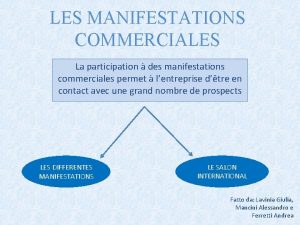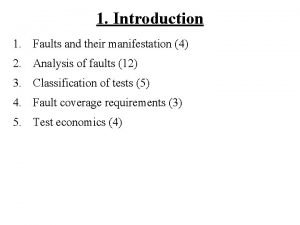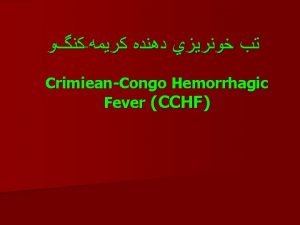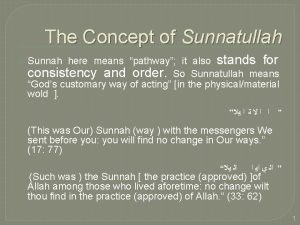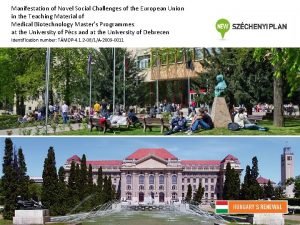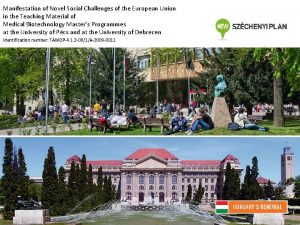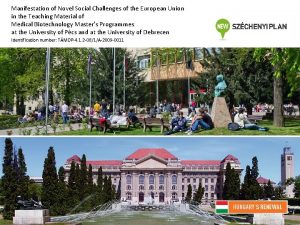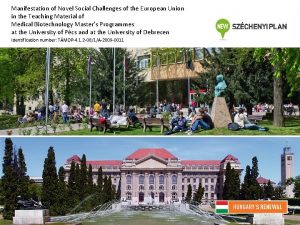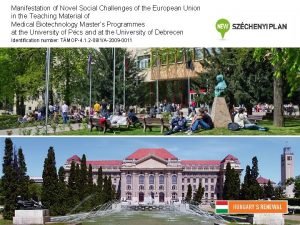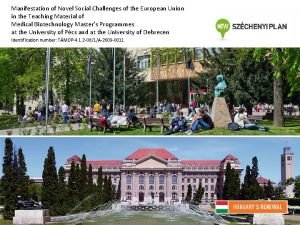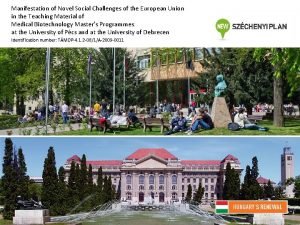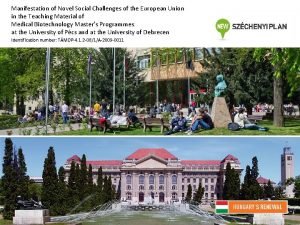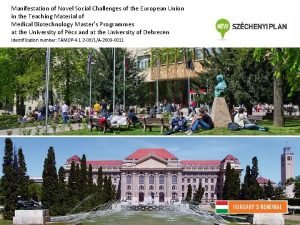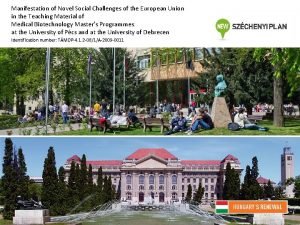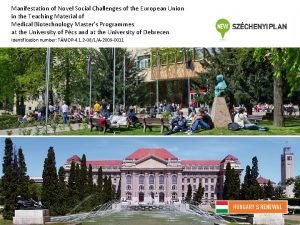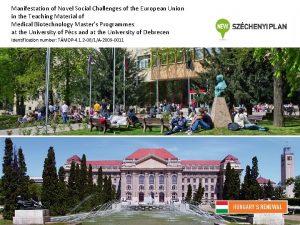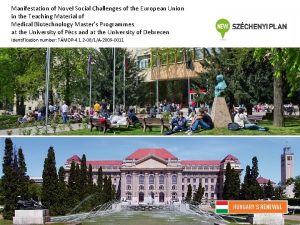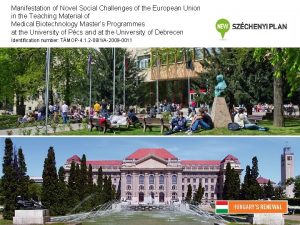Manifestation of Novel Social Challenges of the European
















- Slides: 16

Manifestation of Novel Social Challenges of the European Union in the Teaching Material of Medical Biotechnology Master’s Programmes at the University of Pécs and at the University of Debrecen Identification number: TÁMOP-4. 1. 2 -08/1/A-2009 -0011

Manifestation of Novel Social Challenges of the European Union in the Teaching Material of Medical Biotechnology Master’s Programmes at the University of Pécs and at the University of Debrecen Identification number: TÁMOP-4. 1. 2 -08/1/A-2009 -0011 Krisztián Kvell Molecular and Clinical Basics of Gerontology – Lecture 28 BASICS OF MOLECULAR GERONTOLOGY – AGING THEORIES

TÁMOP-4. 1. 2 -08/1/A-2009 -0011 What is lifespan? • Average lifespan: Age at which 50% of cohort has died (much controled by environment) • Maximum life-span: Essentially the age of the last survivor (much controlled by genetics)

TÁMOP-4. 1. 2 -08/1/A-2009 -0011 Correlation between body mass and lifespan tmax (yrs) 1000 10 1 1. E+00 y = 5. 58 x 0. 146 r 2 = 0. 340 1. E+02 1. E+04 1. E+06 M (g) 1. E+08 1. E+10

TÁMOP-4. 1. 2 -08/1/A-2009 -0011 Approaches in senescence research Three major branches: • Biometric branch: complex, difficult to perform intervention • Inductive branch: few, simple, universal mechanisms • Regeneration and renewal branch: focus on replacement and remodeling

August Weismann’s concepts on aging TÁMOP-4. 1. 2 -08/1/A-2009 -0011 • Adaptive concept: Aging evolved to cleanse the population from old, nonreproductive consumers • Non-adaptive concept: Aging is due to greater weight on early survival / reproduction rather than vigor at later ages

TÁMOP-4. 1. 2 -08/1/A-2009 -0011 Pioneers of aging research include • Denham Harman • John Maynard Smith • George Sacher • Zhores Medvedev • Nathan Shock • Paola Timiras • Bernard Strehler • Loenard Hayflick • Alex Comfort • George Martin

TÁMOP-4. 1. 2 -08/1/A-2009 -0011 The family tree of aging theories Aging theories Evolutionary theories of living and longevity Programmed theories Damage theories Beyond molecular biology of aging General formulations Individual mechanisms Stress-induced premature senescence (SIPS)

TÁMOP-4. 1. 2 -08/1/A-2009 -0011 Major groups of aging theories • Evolutionary theories • Programmed theories • Damage theories - General formulations - Individual mechanisms - Stress induced premature senescence (SIPS) • Beyond molecular biology of aging

Major groups of aging theories, in depth I Evolutionary theories of living and longevity • Programmed death theory • Mutation accumulation theory • The antagonistic pleiotropy theory TÁMOP-4. 1. 2 -08/1/A-2009 -0011

Major groups of aging theories, in depth II Programmed theories • Immune system compromise • Neurological degeneration • Hormonal theory of aging • The genetic clock (programmed epigenomic theory ) TÁMOP-4. 1. 2 -08/1/A-2009 -0011

Major groups of aging theories, in depth III General formulations • Misrepair accumulation theory • Waste accumulation theory of aging • Error catastrophe theory • Wear and tear theory TÁMOP-4. 1. 2 -08/1/A-2009 -0011

Major groups of aging theories, in depth IV Individual mechanisms • Chronic or excess inflammation • Mitochondrial damage • Methylation • Glycation • Oxidative damage-Free radical • Somatic DNA damage/mutation TÁMOP-4. 1. 2 -08/1/A-2009 -0011

Major groups of aging theories, in depth V TÁMOP-4. 1. 2 -08/1/A-2009 -0011 Beyond molecular biology of aging • Thermodynamics of aging • Reliability theory • Rate of living theory

TÁMOP-4. 1. 2 -08/1/A-2009 -0011 Theory of antagonistic pleitropy • Trade-off between fertility and longevity genes • Optimal conditions: invest in growth and reproduction • Restrictive conditions: shut off reproduction, invest in somatic maintenance and survival

TÁMOP-4. 1. 2 -08/1/A-2009 -0011 Correlation of morbidity rates and age 60 50 % with disease Morbidity rate • increase peaks at 60 y, • decelerates after 80 y, • remains linear after 110 y Sinusitis Asthma Renal disease Arthritis Diabetes Cancer Cardiac disease 40 30 20 10 0 0 20 40 60 Age (years) 80 100
 Challenges of novel drug delivery system
Challenges of novel drug delivery system Manifestation physique
Manifestation physique Manifestation commerciale exemple
Manifestation commerciale exemple Manifestation meeting for 504
Manifestation meeting for 504 Canvas.aps
Canvas.aps Manifestation determination flowchart
Manifestation determination flowchart Manifestation shamballa
Manifestation shamballa The manifestation of the holy spirit
The manifestation of the holy spirit Besoins virginia henderson
Besoins virginia henderson Manifestation determination definition
Manifestation determination definition Fault is manifestation of
Fault is manifestation of Manifestation names
Manifestation names Hepatomogaly
Hepatomogaly Manifestation names
Manifestation names Cchf
Cchf Vocabulaire manifestation
Vocabulaire manifestation What is sunnatullah
What is sunnatullah


